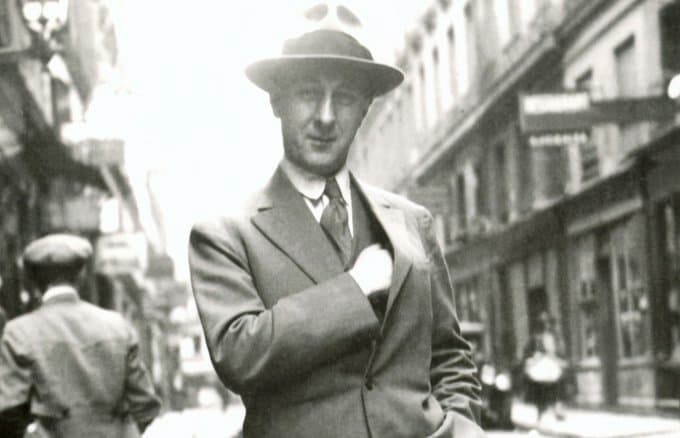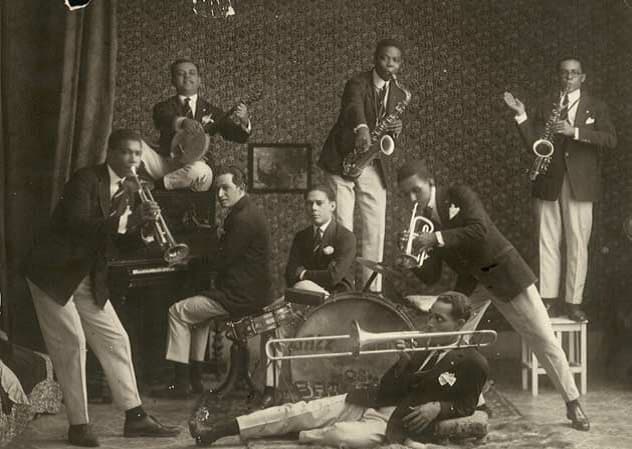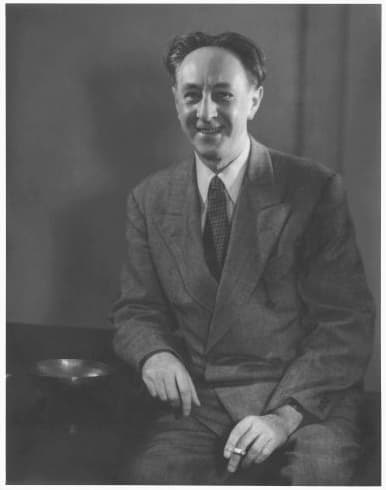Czech composer Bohuslav Martinů (1890–1959) started his music career as a violinist, giving his first public performances at age 15. Townspeople supported his career and at age 16, he was given funding to attend the Prague Conservatory. He didn’t take well to the program and was eventually dropped, but not before finding his love for contemporary music, particularly French music. Returning to his hometown of Polička, Martinů started writing music and sending them to the leading Czech composer, Josef Suk. Suk advised him to take formal study in composition, but this was not possible at the time. Meanwhile, Martinů set up a teaching studio in his hometown and composed in his own time.

The younger Martinů
The end of the war and the composition of Martinů’s first public work, the celebratory cantata Czech Rhapsody and his work with first the National Theatre Orchestra and then the Czech Philharmonic Orchestra gave him some musical outlets. He started studying in Prague with Suk.
In 1923, he departed for Paris, supported by a small grant from the Czechoslovak Ministry of Education. In Paris, Martinů immediately fell for the new styles of the day: Jazz, Neoclassicism, and Surrealism. This was the Paris where Stravinsky held sway and whose sharp rhythms and juxtaposed sectional writing reflected the modern industrial revolution in commerce. From 1925 to 1928, Martinů wrote ballet music, the mode for experimental music after the Sacre du Printemps riot.

The Oito Batutas performed in nightclubs and cabarets in Paris in 1922
© Augusto Malta “Personalidades” collection, Museu da Imagem e do Som, Rio de Janeiro
Works such as Martinů’s 1928 Jazz Suite, using music taken from his ballet Les Larmes du couteau (The Tears of the Knife), show his understanding of the jazz idiom.
Bohuslav Martinů: Jazz Suite, H. 172: I. Prelude (Zdeněk Jílek, piano; Prague Symphony Orchestra; Zbynek Vostrak, cond.)
The first two movements were written in June 1928 in Paris and performed in Baden-Baden, the other two movements following later in the same year; the complete suite was first performed in Frankfurt.
Other works in the jazz style include the two jazz ballets La Revue de cuisine (The Kitchen Revue) and Check to the King, and a short work for large orchestra, Le Jazz. The Jazz Suite is a work for a chamber or small orchestra.
Bohuslav Martinů: Le jazz, H. 168 (Lubomír Pánek Singers; Prague Symphony Orchestra; Zbynek Vostrak, cond.)
Martinů’s fascination with jazz and with neoclassicism permitted this mix of the genres – foxtrots and Charleston in his ballets and a mix that very much points forward to the music of Kurt Weill and looks backward to Stravinsky’s earlier innovations.
After seven years fascinated with jazz, Martinů settled on neoclassicism alone as his new genre. He married a French woman and settled in Paris but WWII soon drove him out of the city, down to southern France under the Vichy government, before finally reaching the United States in 1941.

Martinů in the US, 1945
Martinů’s unusual musical training, first as an accomplished child performer and then as a conservatory drop out brought out certain aspects of his musical life: he turned out to be a very acute listener. His conservatory roommate was impressed by how they could attend the same concert and come back with very different appreciations. Martinů ‘while lacking in other subjects, possessed an incredible brain for analysing and memorizing music’, and this stood him in good stead when encountering the new musical styles in Paris. Jazz has no written tradition and Martinů’s auditory skill was his best teacher of the genre.
For more of the best in classical music, sign up to our E-Newsletter

